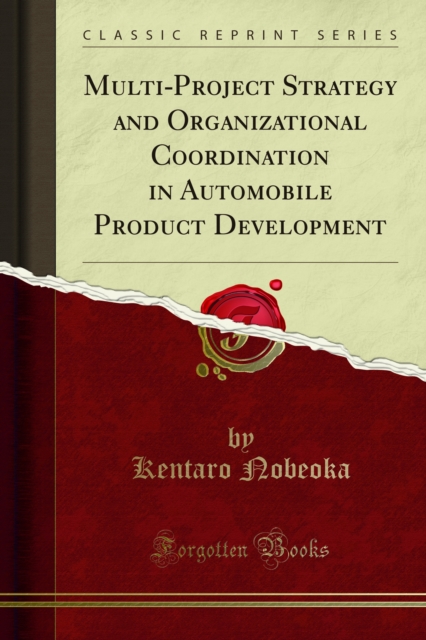
Multi-Project Strategy and Organizational Coordination in Automobile Product Development PDF
by Kentaro Nobeoka, Michael A. Cusumano
- Information
Description
Whilst the greatest effort has been made to ensure the quality of this text, due to the historical nature of this content, in some rare cases there may be minor issues with legibility.
Introduction<br><br>Since the management of new product development has become a central issue in global competition, numerous academic researchers in recent years have undertaken studies of how effective and efficient projects have been in various industries.
Most of the empirical research has focused on the innovation process and on managerial or organizational approaches as well as performance measures for individual projects (Imai et al., 1985; Henderson, 1990; Clark and Fujimoto, 1991; Cusumano, 1991).
At the same time, there are various reports that leading Japanese manufacturers tend to develop new products much more frequently than U.S. or European competitors and that this has been one of the major reasons, along with manufacturing skills, for their strong growth performance in global markets (Abegglen and Stalk, 1985; Dertouzos et al., 1988; Womack et al., 1990).
At the same time, even Japanese manufacturers became more concerned with efficiency.
In recent years they have faced severe profitability problems related at least in part to the high costs of developing and manufacturing so many new products and product variations in markets, such as automobiles and consumer electronics, where demand has slowed or even declined, while the cost of money in Japan has increased due to rising interest rates and drops in the stock market and real estate values (Business week, 1992).
An essential missing area in research on product development that relate directly to the issue of how to produce multiple products and variations more efficiently is the management of multiple new-product development efforts over time at the firm level.
This is important because, while high levels of engineering productivity in individual projects may contribute to making a firm overall more efficient in product development, to develop a successful stream of new products over many years, as well as to take advantage of designs and components in more than one product without com
Information
-
Download Now
- Format:PDF
- Publisher:Forgotten Books
- Publication Date:27/11/2019
- Category:
- ISBN:9780259688570
Information
-
Download Now
- Format:PDF
- Publisher:Forgotten Books
- Publication Date:27/11/2019
- Category:
- ISBN:9780259688570